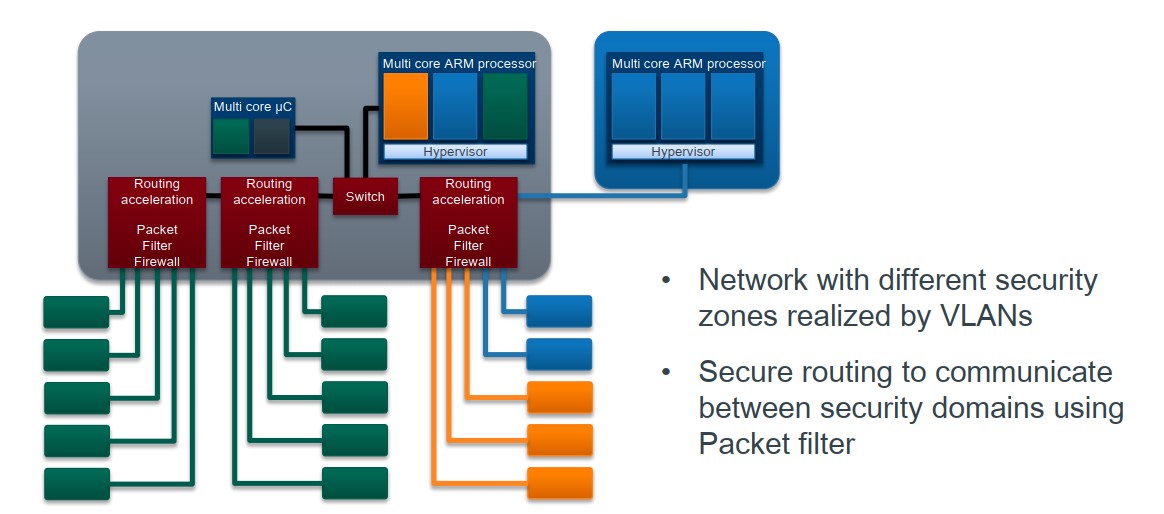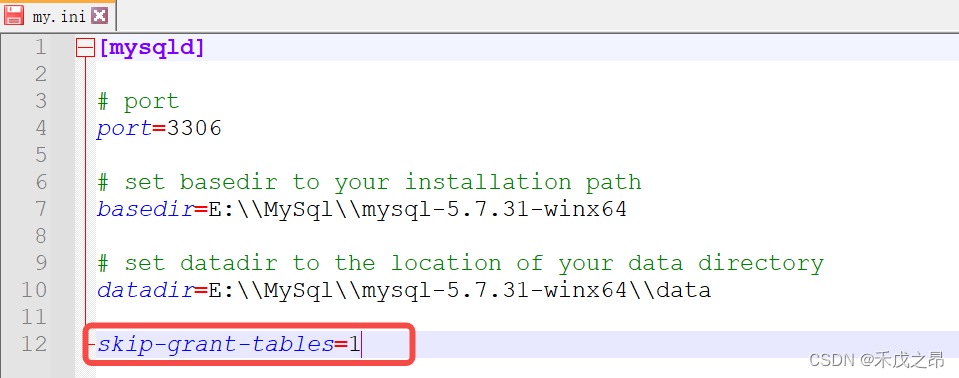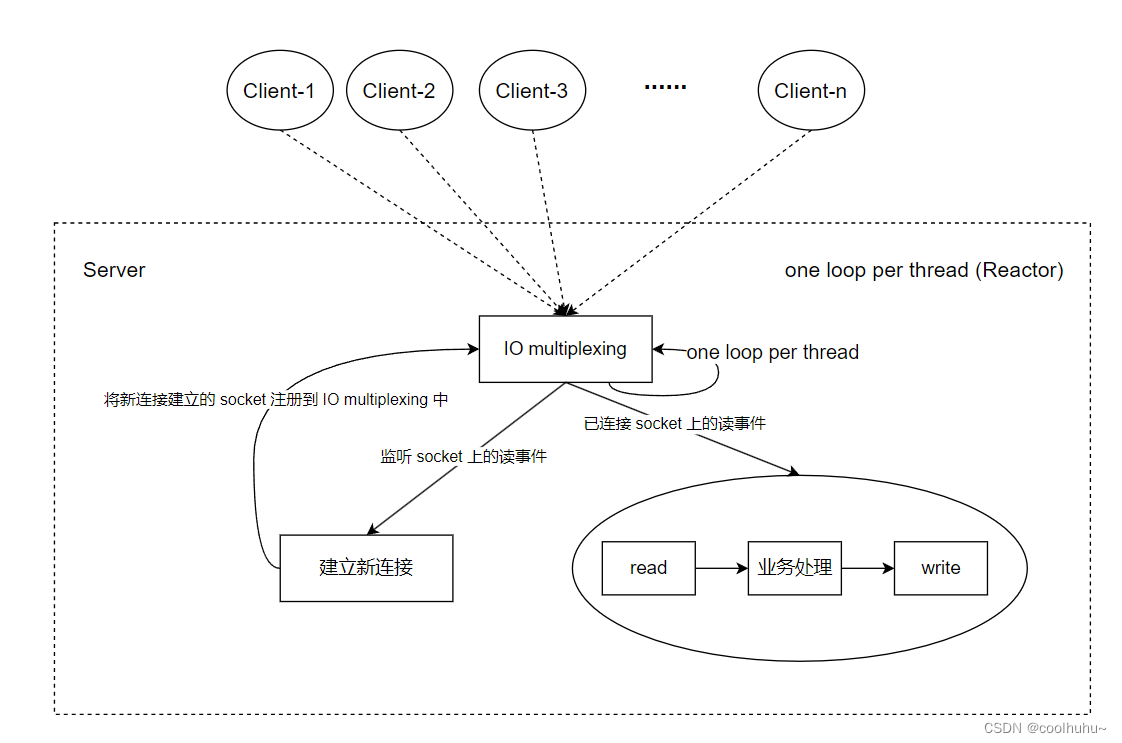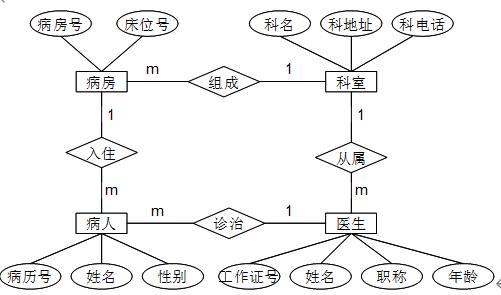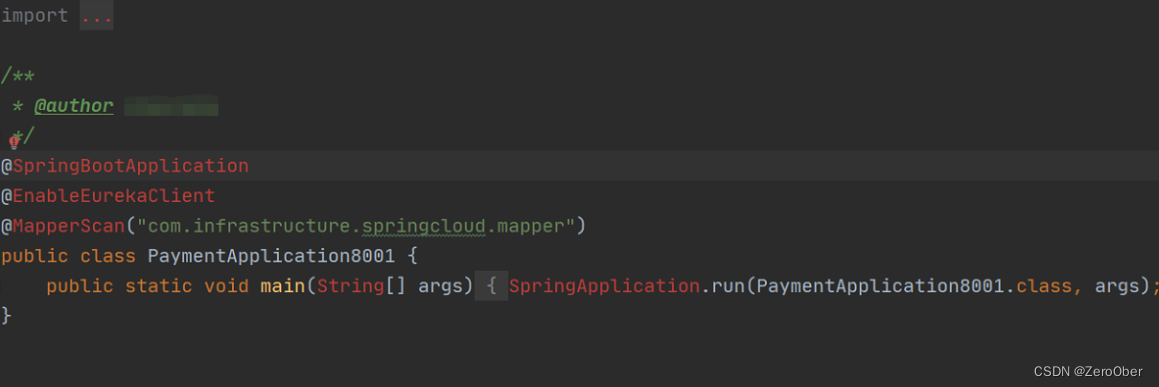前言
当bootloader启动后,启动kernel,kernel启动完后,在用户空间启动init进程,再通过init进程,来读取init.rc中的相关配置,从而来启动其他相关进程以及其他操作。
init进程启动主要分为两个阶段:
第一个阶段负责:
- 创建文件系统目录并挂载相关的文件系统
- 初始化日志输出
- 启用SELinux安全策略
- 为第二阶段做准备
第二阶段负责:
- 创建进程会话密钥、并初始化属性系统
- 执行SELinux第二阶段、并恢复一些文件安全上下文
- 新建epoll、并初始化子进程终止信号处理函数
- 设置其他系统属性、并开启属性服务
- 解析init.rc等文件,建立rc文件的action、service,启动其他进程
init进程如何被启动?
init进程是在Kernel启动后,启动的第一个用户空间进程,PID为1
kernel-5.10/init/main.c
static int __ref kernel_init(void *unused)
{
int ret;
kernel_init_freeable();//进行init进程的一些初始化操作
/* need to finish all async __init code before freeing the memory */
async_synchronize_full();//等待所有异步调用执行完成,在释放内存前,必须完成所有的异步 __init 代码
ftrace_free_init_mem();
jump_label_invalidate_initmem();
free_initmem();//释放所有init.*中的内存
mark_readonly();
/*
* Kernel mappings are now finalized - update the userspace page-table
* to finalize PTI.
*/
pti_finalize();
system_state = SYSTEM_RUNNING;//设置系统状态为运行状态
numa_default_policy();//设定NUMA系统的默认内存访问策略
rcu_end_inkernel_boot();
bootprof_log_boot("Kernel_init_done");
if (ramdisk_execute_command) {//ramdisk_execute_command的值为“/init”
ret = run_init_process(ramdisk_execute_command);//运行根目录下的init进程 *****
if (!ret)
return 0;
pr_err("Failed to execute %s (error %d)\n",
ramdisk_execute_command, ret);
}
/*
* We try each of these until one succeeds.
*
* The Bourne shell can be used instead of init if we are
* trying to recover a really broken machine.
*/
if (execute_command) {//execute_command的值如果有定义就去根目录下找对应的应用程序,然后启动
ret = run_init_process(execute_command);
if (!ret)
return 0;
panic("Requested init %s failed (error %d).",
execute_command, ret);
}
if (!try_to_run_init_process("/sbin/init") ||
!try_to_run_init_process("/etc/init") ||
!try_to_run_init_process("/bin/init") ||
!try_to_run_init_process("/bin/sh"))//如果ramdisk_execute_command和execute_command定义的应用程序都没有找到,
//就到根目录下找 /sbin/init,/etc/init,/bin/init,/bin/sh 这四个应用程序进行启动
return 0;
panic("No working init found. Try passing init= option to kernel. "
"See Linux Documentation/admin-guide/init.rst for guidance.");
}
在/kernel/init/mian.c#kernel_init()方法调用了run_init_process()进行启动init进程
init进程入口
在Android Q(10.0)之前的init入口函数是init.cpp,从Android Q(10.0)开始init的入口函数是main.cpp,把各个阶段的操作分离开来,是代码更加简洁。
进入到main.cpp#main()
system/core/init/main.cpp
/*
* 1.第一个参数argc表示参数个数,第二个参数是参数列表,也就是具体的参数
* 2.main函数有四个参数入口,
*一是参数中有ueventd,进入ueventd_main
*二是参数中有subcontext,进入InitLogging 和SubcontextMain
*三是参数中有selinux_setup,进入SetupSelinux
*四是参数中有second_stage,进入SecondStageMain
* 3.main的执行顺序如下:
* (1)ueventd_main init进程创建子进程ueventd,
* 并将创建设备节点文件的工作托付给ueventd,ueventd通过两种方式创建设备节点文件
* (2)FirstStageMain 启动第一阶段
* (3)SetupSelinux 加载selinux规则,并设置selinux日志,完成SELinux相关工作
* (4)SecondStageMain 启动第二阶段
*/
int main(int argc, char** argv) {
#if __has_feature(address_sanitizer)
__asan_set_error_report_callback(AsanReportCallback);
#endif
// Boost prio which will be restored later
setpriority(PRIO_PROCESS, 0, -20);
//当argv[0]的内容为ueventd时,strcmp的值为0,ueventd主要是负责设备节点的创建、权限设定等一些列工作
if (!strcmp(basename(argv[0]), "ueventd")) {
return ueventd_main(argc, argv);
}
//当传入的参数个数大于1时
if (argc > 1) {
//参数为subcontext,初始化日志系统
if (!strcmp(argv[1], "subcontext")) {
android::base::InitLogging(argv, &android::base::KernelLogger);
const BuiltinFunctionMap& function_map = GetBuiltinFunctionMap();
return SubcontextMain(argc, argv, &function_map);
}
//参数为selinux_setup,启动Selinux安全策略
if (!strcmp(argv[1], "selinux_setup")) {
return SetupSelinux(argv);
}
//参数为“sencond_stage”,启动init进程第二阶段
if (!strcmp(argv[1], "second_stage")) {
return SecondStageMain(argc, argv);
}
}
//默认启动init进程第一阶段
return FirstStageMain(argc, argv);
}
ueventd_main()
Android根文件系统的镜像中不存在“/dev”目录,该目录是init进程启动后动态创建的。所以,建立Android中设备节点文件需要init进程完成,为此init进程创建子进程ueventd,并将创建设备节点文件的工作托付给ueventd。
ueventd通过两种方式创建设备节点文件:
第一种方式对应“冷插拔”(Cold Plug),即以预先定义的设备信息为基础,当ueventd启动后,同一创建设备节点文件。这一类设备节点文件也被称为静态节点文件。
第二种方式对应“热插拔”(Hot Plug),即在系统运行中,当有设备插入USB端口时,ueventd就会接收到这一事件,为插入的设备动态创建设备节点文件。这一类设备节点文件也被称为动态节点文件。
进入ueventd.cpp#ueventd_main()
system/core/init/ueventd.cpp
int ueventd_main(int argc, char** argv) {
/*
* init sets the umask to 077 for forked processes. We need to
* create files with exact permissions, without modification by
* the umask.
*/
//设置新建文件的默认值,这个与chmod相反,这里相当于新建文件后的权限为666
umask(000);
//初始化内核日志,位于节点/dev/kmsg,此时logd、logcat进程还没有起来
//采用kernel的log系统,打开的设备节点/dev/kmsg,那么可通过cat /dev/kmsg来获取内核log
android::base::InitLogging(argv, &android::base::KernelLogger);
LOG(INFO) << "ueventd started!";
//注册selinux相关的用于打印log的回调函数
SelinuxSetupKernelLogging();
SelabelInitialize();
std::vector<std::unique_ptr<UeventHandler>> uevent_handlers;
//解析xml,根据不同SOC厂商获取不同的hardware rc文件
auto ueventd_configuration = GetConfiguration();
uevent_handlers.emplace_back(std::make_unique<DeviceHandler>(
std::move(ueventd_configuration.dev_permissions),
std::move(ueventd_configuration.sysfs_permissions),
std::move(ueventd_configuration.subsystems), android::fs_mgr::GetBootDevices(), true));
uevent_handlers.emplace_back(std::make_unique<FirmwareHandler>(
std::move(ueventd_configuration.firmware_directories),
std::move(ueventd_configuration.external_firmware_handlers)));
//冷启动
if (ueventd_configuration.enable_modalias_handling) {
std::vector<std::string> base_paths = {"/odm/lib/modules", "/vendor/lib/modules"};
uevent_handlers.emplace_back(std::make_unique<ModaliasHandler>(base_paths));
}
UeventListener uevent_listener(ueventd_configuration.uevent_socket_rcvbuf_size);
if (!android::base::GetBoolProperty(kColdBootDoneProp, false)) {
ColdBoot cold_boot(uevent_listener, uevent_handlers,
ueventd_configuration.enable_parallel_restorecon);
cold_boot.Run();
}
for (auto& uevent_handler : uevent_handlers) {
uevent_handler->ColdbootDone();
}
//忽略子进程终止信号
signal(SIGCHLD, SIG_IGN);
//在最后一次调用waitpid()和为上面的sigchld设置SIG_IGN之间退出的获取和挂起的子级
while (waitpid(-1, nullptr, WNOHANG) > 0) {
}
// Restore prio before main loop
setpriority(PRIO_PROCESS, 0, 0);
//监听来自驱动的uevent,进行“热插拔”处理
uevent_listener.Poll([&uevent_handlers](const Uevent& uevent) {
for (auto& uevent_handler : uevent_handlers) {
uevent_handler->HandleUevent(uevent);
}
return ListenerAction::kContinue;
});
return 0;
}
init进程启动第一阶段first_stage_init.cpp
主要负责:
- 创建文件系统目录并挂载相关的文件系统
- 初始化日志输出
- 启用SELinux安全策略
- 为第二阶段做准备
system/core/init/first_stage_init.cpp
int FirstStageMain(int argc, char** argv) {
//init crash时重启引导加载程序
//这个函数主要作用将各种信号量,如SIGABRT,SIGBUS等的行为设置为SA_RESTART,一旦监听到这些信号即执行重启系统
if (REBOOT_BOOTLOADER_ON_PANIC) {
InstallRebootSignalHandlers();
}
boot_clock::time_point start_time = boot_clock::now();
std::vector<std::pair<std::string, int>> errors;
#define CHECKCALL(x) \
if ((x) != 0) errors.emplace_back(#x " failed", errno);
// Clear the umask.
//清空文件权限
umask(0);
CHECKCALL(clearenv());
CHECKCALL(setenv("PATH", _PATH_DEFPATH, 1));
//在RAM内存上获取基本的文件系统,剩余的被rc文件所用
CHECKCALL(mount("tmpfs", "/dev", "tmpfs", MS_NOSUID, "mode=0755"));
CHECKCALL(mkdir("/dev/pts", 0755));
CHECKCALL(mkdir("/dev/socket", 0755));
CHECKCALL(mkdir("/dev/dm-user", 0755));
CHECKCALL(mount("devpts", "/dev/pts", "devpts", 0, NULL));
#define MAKE_STR(x) __STRING(x)
CHECKCALL(mount("proc", "/proc", "proc", 0, "hidepid=2,gid=" MAKE_STR(AID_READPROC)));
#undef MAKE_STR
//非特权应用不能使用Android cmdline
CHECKCALL(chmod("/proc/cmdline", 0440));
std::string cmdline;
android::base::ReadFileToString("/proc/cmdline", &cmdline);
// Don't expose the raw bootconfig to unprivileged processes.
chmod("/proc/bootconfig", 0440);
std::string bootconfig;
android::base::ReadFileToString("/proc/bootconfig", &bootconfig);
gid_t groups[] = {AID_READPROC};
CHECKCALL(setgroups(arraysize(groups), groups));
CHECKCALL(mount("sysfs", "/sys", "sysfs", 0, NULL));
CHECKCALL(mount("selinuxfs", "/sys/fs/selinux", "selinuxfs", 0, NULL));
CHECKCALL(mknod("/dev/kmsg", S_IFCHR | 0600, makedev(1, 11)));
if constexpr (WORLD_WRITABLE_KMSG) {
CHECKCALL(mknod("/dev/kmsg_debug", S_IFCHR | 0622, makedev(1, 11)));
}
CHECKCALL(mknod("/dev/random", S_IFCHR | 0666, makedev(1, 8)));
CHECKCALL(mknod("/dev/urandom", S_IFCHR | 0666, makedev(1, 9)));
//这对于日志包装器是必需的,它在ueventd运行之前被调用
CHECKCALL(mknod("/dev/ptmx", S_IFCHR | 0666, makedev(5, 2)));
CHECKCALL(mknod("/dev/null", S_IFCHR | 0666, makedev(1, 3)));
//在第一阶段挂在tmpfs、mnt/vendor、mount/product分区。其他的分区不需要在第一阶段加载,
//只需要在第二阶段通过rc文件解析来加载
CHECKCALL(mount("tmpfs", "/mnt", "tmpfs", MS_NOEXEC | MS_NOSUID | MS_NODEV,
"mode=0755,uid=0,gid=1000"));
//创建可供读写的vendor目录
CHECKCALL(mkdir("/mnt/vendor", 0755));
CHECKCALL(mkdir("/mnt/product", 0755));
// 挂载APEX,这在Android 10.0中特殊引入,用来解决碎片化问题,类似一种组件方式,对Treble的增强,
// 不写谷歌特殊更新不需要完整升级整个系统版本,只需要像升级APK一样,进行APEX组件升级
CHECKCALL(mount("tmpfs", "/debug_ramdisk", "tmpfs", MS_NOEXEC | MS_NOSUID | MS_NODEV,
"mode=0755,uid=0,gid=0"));
// /second_stage_resources is used to preserve files from first to second
// stage init
CHECKCALL(mount("tmpfs", kSecondStageRes, "tmpfs", MS_NOEXEC | MS_NOSUID | MS_NODEV,
"mode=0755,uid=0,gid=0"))
#undef CHECKCALL
//把标准输入、标准输出和标准错误重定向到空设备文件“/dev/null”
SetStdioToDevNull(argv);
// Now that tmpfs is mounted on /dev and we have /dev/kmsg, we can actually
// talk to the outside world...
#ifdef MTK_LOG
#ifndef MTK_LOG_DISABLERATELIMIT
if (cmdline.find("init.mtklogdrl=1") != std::string::npos)
SetMTKLOGDISABLERATELIMIT();
#else
SetMTKLOGDISABLERATELIMIT();
#endif // MTK_LOG_DISABLERATELIMIT
if (GetMTKLOGDISABLERATELIMIT())
InitKernelLogging_split(argv);
else
InitKernelLogging(argv);
#else
//在/dev目录下挂载好tmpfs以及kmsg
//这样就可以初始化/kernel Log系统,供用户打印log
InitKernelLogging(argv);
#endif
......
/*
初始化一些必须的分区
主要作用是去解析/proc/device-tree/firmware/android/fstab
然后得到“/system”,“/vendor”,“/odm”三个目录的挂载信息
*/
if (!DoFirstStageMount(!created_devices)) {
LOG(FATAL) << "Failed to mount required partitions early ...";
}
struct stat new_root_info;
if (stat("/", &new_root_info) != 0) {
PLOG(ERROR) << "Could not stat(\"/\"), not freeing ramdisk";
old_root_dir.reset();
}
if (old_root_dir && old_root_info.st_dev != new_root_info.st_dev) {
FreeRamdisk(old_root_dir.get(), old_root_info.st_dev);
}
SetInitAvbVersionInRecovery();
setenv(kEnvFirstStageStartedAt, std::to_string(start_time.time_since_epoch().count()).c_str(),
1);
//启动init进程,传入参数selinux_steup
//执行命令:/system/bin/init selinux_setup
const char* path = "/system/bin/init";
const char* args[] = {path, "selinux_setup", nullptr};
auto fd = open("/dev/kmsg", O_WRONLY | O_CLOEXEC);
dup2(fd, STDOUT_FILENO);
dup2(fd, STDERR_FILENO);
close(fd);
execv(path, const_cast<char**>(args));
// execv() only returns if an error happened, in which case we
// panic and never fall through this conditional.
PLOG(FATAL) << "execv(\"" << path << "\") failed";
return 1;
}
加载SELinux规则
SELinux是「Security-Enhanced Linux」的简称,是美国国家安全局「NSA=The National Security Agency」
和SCC(Secure Computing Corporation)开发的 Linux的一个扩张强制访问控制安全模块。在这种访问控制体系的限制下,进程只能访问那些在他的任务中所需要文件。
SElinux有两种工作模式:
- permissive,所有的操作都被允许(即没有MAC),但是如果违法权限的话,会记录日志,一般eng模式用
- enforcing,所有操作都会进行权限检查,一般user和user-debug模式用
不管是security_setenforce还是security_getenforce都是去操作/sys/fs/selinux/enforce文件,0表示permissive 1表示enforcing
SetupSelinux:初始化selinux,加载SElinux规则,配置SWLinux相关log输出,并启动第二阶段
system/core/init/selinux.cpp
/*此函数初始化selinux,然后执行init以在init selinux中运行*/
int SetupSelinux(char** argv) {
#ifdef JOURNEY_FEATURE_ROOT_MODE
initJourneyRootMode();
#endif
SetStdioToDevNull(argv);
#ifdef MTK_LOG
#ifndef MTK_LOG_DISABLERATELIMIT
{
std::string cmdline;
android::base::ReadFileToString("/proc/cmdline", &cmdline);
if (cmdline.find("init.mtklogdebuggable=1") != std::string::npos)
SetMTKLOGDISABLERATELIMIT();
}
#else
SetMTKLOGDISABLERATELIMIT();
#endif // MTK_LOG_DISABLERATELIMIT
if (GetMTKLOGDISABLERATELIMIT())
InitKernelLogging_split(argv);
else
InitKernelLogging(argv);
#else
//初始化Kernel日志
InitKernelLogging(argv);
#endif
//Debug版本init crash时重启引导加载程序
if (REBOOT_BOOTLOADER_ON_PANIC) {
InstallRebootSignalHandlers();
}
boot_clock::time_point start_time = boot_clock::now();
MountMissingSystemPartitions();
#ifdef MTK_LOG
if (GetMTKLOGDISABLERATELIMIT())
SelinuxSetupKernelLogging_split();
else
SelinuxSetupKernelLogging();
#else
//注册回调,用来设置需要写入kmsg的selinux日志
SelinuxSetupKernelLogging();
#endif
LOG(INFO) << "Opening SELinux policy";
// Read the policy before potentially killing snapuserd.
std::string policy;
ReadPolicy(&policy);
auto snapuserd_helper = SnapuserdSelinuxHelper::CreateIfNeeded();
if (snapuserd_helper) {
// Kill the old snapused to avoid audit messages. After this we cannot
// read from /system (or other dynamic partitions) until we call
// FinishTransition().
snapuserd_helper->StartTransition();
}
LoadSelinuxPolicy(policy);
if (snapuserd_helper) {
// Before enforcing, finish the pending snapuserd transition.
snapuserd_helper->FinishTransition();
snapuserd_helper = nullptr;
}
//加载SElinux规则
SelinuxSetEnforcement();
// We're in the kernel domain and want to transition to the init domain. File systems that
// store SELabels in their xattrs, such as ext4 do not need an explicit restorecon here,
// but other file systems do. In particular, this is needed for ramdisks such as the
// recovery image for A/B devices.
if (selinux_android_restorecon("/system/bin/init", 0) == -1) {
PLOG(FATAL) << "restorecon failed of /system/bin/init failed";
}
setenv(kEnvSelinuxStartedAt, std::to_string(start_time.time_since_epoch().count()).c_str(), 1);
//准备启动init进程,传入参数second_stage,进入到第二阶段
const char* path = "/system/bin/init";
const char* args[] = {path, "second_stage", nullptr};
execv(path, const_cast<char**>(args));
// execv() only returns if an error happened, in which case we
// panic and never return from this function.
PLOG(FATAL) << "execv(\"" << path << "\") failed";
return 1;
}
SelinuxSetEnforcement():加载SeLinux规则
system/core/init/selinux.cpp
void SelinuxSetEnforcement() {
//获取当前Kernel的工作模式
bool kernel_enforcing = (security_getenforce() == 1);
//获取工作模式的配置
bool is_enforcing = IsEnforcing();
//如果当前的工作模式与配置的不同,就将当前的工作模式改掉
if (kernel_enforcing != is_enforcing) {
if (security_setenforce(is_enforcing)) {
PLOG(FATAL) << "security_setenforce(" << (is_enforcing ? "true" : "false")
<< ") failed";
}
}
if (auto result = WriteFile("/sys/fs/selinux/checkreqprot", "0"); !result.ok()) {
LOG(FATAL) << "Unable to write to /sys/fs/selinux/checkreqprot: " << result.error();
}
}
init进程启动第二阶段
主要负责:
- 创建进程会话密钥,并初始化属性系统
- 执行SELinux第二阶段,并恢复一些文件安全上下文
- 新建epoll,并初始化子进程终止信号处理函数
- 设置其他系统属性,并开启属性服务
- 解析init.rc等文件,建立rc文件的action、service,启动其他进程

system/core/init/init.cpp
int SecondStageMain(int argc, char** argv) {
#ifdef JOURNEY_FEATURE_ROOT_MODE
initJourneyRootMode();
#endif
/*
*init crash时重启引导加载程序
*这个函数主要作用将各种信号量,如SIGABRT,SIGBUS等的行为设置为SA_RESTART,一旦监听到这些信号即执行重启系统
*/
if (REBOOT_BOOTLOADER_ON_PANIC) {
InstallRebootSignalHandlers();
}
boot_clock::time_point start_time = boot_clock::now();
trigger_shutdown = [](const std::string& command) { shutdown_state.TriggerShutdown(command); };
//把标准输入、标准输出和标准错误重定向到空设备文件“/dev/null"
SetStdioToDevNull(argv);
#ifdef MTK_LOG
#ifndef MTK_LOG_DISABLERATELIMIT
{
std::string cmdline;
android::base::ReadFileToString("/proc/cmdline", &cmdline);
if (cmdline.find("init.mtklogdrl=1") != std::string::npos)
SetMTKLOGDISABLERATELIMIT();
const char* force_debuggable_env = getenv("INIT_FORCE_DEBUGGABLE");
if (force_debuggable_env && AvbHandle::IsDeviceUnlocked()) {
SetMTKLOGDISABLERATELIMIT();
}
}
#else
SetMTKLOGDISABLERATELIMIT();
#endif // MTK_LOG_DISABLERATELIMIT
if (GetMTKLOGDISABLERATELIMIT())
InitKernelLogging_split(argv);
else
InitKernelLogging(argv);
#else
//在/dev目录下挂载好tmpfs以及kmsg
//这样就可以初始化/kernel log系统,供用户打印log
InitKernelLogging(argv);
#endif
LOG(INFO) << "init second stage started!";
// Update $PATH in the case the second stage init is newer than first stage init, where it is
// first set.
if (setenv("PATH", _PATH_DEFPATH, 1) != 0) {
PLOG(FATAL) << "Could not set $PATH to '" << _PATH_DEFPATH << "' in second stage";
}
// Init should not crash because of a dependence on any other process, therefore we ignore
// SIGPIPE and handle EPIPE at the call site directly. Note that setting a signal to SIG_IGN
// is inherited across exec, but custom signal handlers are not. Since we do not want to
// ignore SIGPIPE for child processes, we set a no-op function for the signal handler instead.
{
struct sigaction action = {.sa_flags = SA_RESTART};
action.sa_handler = [](int) {};
sigaction(SIGPIPE, &action, nullptr);
}
// Set init and its forked children's oom_adj.
if (auto result =
WriteFile("/proc/1/oom_score_adj", StringPrintf("%d", DEFAULT_OOM_SCORE_ADJUST));
!result.ok()) {
LOG(ERROR) << "Unable to write " << DEFAULT_OOM_SCORE_ADJUST
<< " to /proc/1/oom_score_adj: " << result.error();
}
// Set up a session keyring that all processes will have access to. It
// will hold things like FBE encryption keys. No process should override
// its session keyring.
//01.创建进程会话密钥并初始化属性系统
keyctl_get_keyring_ID(KEY_SPEC_SESSION_KEYRING, 1);
// Indicate that booting is in progress to background fw loaders, etc.
//创建/dev/.booting文件,就是个标记,表示booting进行中
close(open("/dev/.booting", O_WRONLY | O_CREAT | O_CLOEXEC, 0000));
// See if need to load debug props to allow adb root, when the device is unlocked.
const char* force_debuggable_env = getenv("INIT_FORCE_DEBUGGABLE");
bool load_debug_prop = false;
if (force_debuggable_env && AvbHandle::IsDeviceUnlocked()) {
load_debug_prop = "true"s == force_debuggable_env;
}
unsetenv("INIT_FORCE_DEBUGGABLE");
// Umount the debug ramdisk so property service doesn't read .prop files from there, when it
// is not meant to.
if (!load_debug_prop) {
UmountDebugRamdisk();
}
//初始化属性系统,并从指定文件读取属性
PropertyInit();
// Umount second stage resources after property service has read the .prop files.
UmountSecondStageRes();
// Umount the debug ramdisk after property service has read the .prop files when it means to.
if (load_debug_prop) {
UmountDebugRamdisk();
}
// Mount extra filesystems required during second stage init
MountExtraFilesystems();
// Now set up SELinux for second stage.
#ifdef MTK_LOG
if (GetMTKLOGDISABLERATELIMIT())
SelinuxSetupKernelLogging_split();
else
SelinuxSetupKernelLogging();
#else
SelinuxSetupKernelLogging();
#endif
SelabelInitialize();
/*
02.进行SELinux第二阶段并恢复一些文件安全上下文
恢复相关文件的安全上下文,因为这些文件是在SELinux安全机制初始化前创建的
所以需要重新恢复上下文
*/
SelinuxRestoreContext();
/*
03.新建epoll并初始化子进程终止信号处理函数
创建epoll实例,并返回epoll的文件描述
*/
Epoll epoll;
if (auto result = epoll.Open(); !result.ok()) {
PLOG(FATAL) << result.error();
}
#ifdef G1122717
// Watch properties with specific meanings to init.
LOG(INFO) << "Apply watching properties with specific meanings to init.";
ActionManager::GetInstance().StartWatchingProperty("sys.powerctl");
ActionManager::GetInstance().StartWatchingProperty("ro.persistent_properties.ready");
ActionManager::GetInstance().StartWatchingProperty(kColdBootDoneProp);
#endif
/*
主要是创建handler处理子进程终止信号,注册一个signal到epoll进行监听
进行子继承处理
*/
InstallSignalFdHandler(&epoll);
InstallInitNotifier(&epoll);
//04.设置其他系统属性并开启系统属性服务
StartPropertyService(&property_fd);
#if defined(MTK_LOG) && defined(MTK_COMMAND_WDOG)
ActionManager::GetInstance().StartCommandWDOG();
#endif
// Make the time that init stages started available for bootstat to log.
RecordStageBoottimes(start_time);
// Set libavb version for Framework-only OTA match in Treble build.
if (const char* avb_version = getenv("INIT_AVB_VERSION"); avb_version != nullptr) {
SetProperty("ro.boot.avb_version", avb_version);
}
unsetenv("INIT_AVB_VERSION");
fs_mgr_vendor_overlay_mount_all();
export_oem_lock_status();
MountHandler mount_handler(&epoll);
SetUsbController();
#ifdef JOURNEY_FEATURE_SECURE
CheckJourneySecureMode();
#endif
const BuiltinFunctionMap& function_map = GetBuiltinFunctionMap();
Action::set_function_map(&function_map);
if (!SetupMountNamespaces()) {
PLOG(FATAL) << "SetupMountNamespaces failed";
}
//初始化文件上下文
InitializeSubcontext();
ActionManager& am = ActionManager::GetInstance();
ServiceList& sm = ServiceList::GetInstance();
/*
05.解析init.rc等文件,建立rc文件的action、service,启动其他进程
*/
LoadBootScripts(am, sm);
// Turning this on and letting the INFO logging be discarded adds 0.2s to
// Nexus 9 boot time, so it's disabled by default.
if (false) DumpState();
// Make the GSI status available before scripts start running.
//当GSI脚本running时,确保GSI状态可用
auto is_running = android::gsi::IsGsiRunning() ? "1" : "0";
SetProperty(gsi::kGsiBootedProp, is_running);
auto is_installed = android::gsi::IsGsiInstalled() ? "1" : "0";
SetProperty(gsi::kGsiInstalledProp, is_installed);
am.QueueBuiltinAction(SetupCgroupsAction, "SetupCgroups");
am.QueueBuiltinAction(SetKptrRestrictAction, "SetKptrRestrict");
am.QueueBuiltinAction(TestPerfEventSelinuxAction, "TestPerfEventSelinux");
//执行rc文件中触发器为 on early-init的语句
am.QueueEventTrigger("early-init");
// Queue an action that waits for coldboot done so we know ueventd has set up all of /dev...
//等冷插拔设备初始化完成
am.QueueBuiltinAction(wait_for_coldboot_done_action, "wait_for_coldboot_done");
// ... so that we can start queuing up actions that require stuff from /dev.
am.QueueBuiltinAction(SetMmapRndBitsAction, "SetMmapRndBits");
//设备组合键的初始化操作
Keychords keychords;
am.QueueBuiltinAction(
[&epoll, &keychords](const BuiltinArguments& args) -> Result<void> {
for (const auto& svc : ServiceList::GetInstance()) {
keychords.Register(svc->keycodes());
}
keychords.Start(&epoll, HandleKeychord);
return {};
},
"KeychordInit");
// Trigger all the boot actions to get us started.
//执行rc文件中触发器为on init的语句
am.QueueEventTrigger("init");
// Don't mount filesystems or start core system services in charger mode.
/*
当设备处于充电模式时,不需要mount文件系统或者启动系统服务
充电模式下,将charger加入执行队列,否则把late-init加入执行队列
*/
std::string bootmode = GetProperty("ro.bootmode", "");
if (bootmode == "charger") {
am.QueueEventTrigger("charger");
} else {
am.QueueEventTrigger("late-init");
}
// Run all property triggers based on current state of the properties.
//基于属性当前状态,运行所有的属性触发器
am.QueueBuiltinAction(queue_property_triggers_action, "queue_property_triggers");
// Restore prio before main loop
setpriority(PRIO_PROCESS, 0, 0);
while (true) {
// By default, sleep until something happens.
auto epoll_timeout = std::optional<std::chrono::milliseconds>{};
auto shutdown_command = shutdown_state.CheckShutdown();
if (shutdown_command) {
LOG(INFO) << "Got shutdown_command '" << *shutdown_command
<< "' Calling HandlePowerctlMessage()";
HandlePowerctlMessage(*shutdown_command);
shutdown_state.set_do_shutdown(false);
}
//依次执行每个action中携带command对应的执行函数
if (!(prop_waiter_state.MightBeWaiting() || Service::is_exec_service_running())) {
am.ExecuteOneCommand();
}
if (!IsShuttingDown()) {
auto next_process_action_time = HandleProcessActions();
// If there's a process that needs restarting, wake up in time for that.
if (next_process_action_time) {
epoll_timeout = std::chrono::ceil<std::chrono::milliseconds>(
*next_process_action_time - boot_clock::now());
if (*epoll_timeout < 0ms) epoll_timeout = 0ms;
}
}
if (!(prop_waiter_state.MightBeWaiting() || Service::is_exec_service_running())) {
// If there's more work to do, wake up again immediately.
if (am.HasMoreCommands()) epoll_timeout = 0ms;
}
#ifdef MTK_LOG
int log_ms = _LogReap();//PropSetLogReap();
if (log_ms > -1 && (!epoll_timeout || epoll_timeout->count() > log_ms))
epoll_timeout = std::chrono::milliseconds(log_ms);
if (GetMTKLOGDISABLERATELIMIT()) {
if (!Getwhilepiggybacketed(1) && Getwhileepduration(1) > 1999)
LOG(INFO) << "Lastest epoll wait tooks " << Getwhileepduration(1) << "ms";
}
android::base::Timer t;
auto pending_functions = epoll.Wait(epoll_timeout);
if (GetMTKLOGDISABLERATELIMIT()) {
uint64_t duration = t.duration().count();
uint64_t nowms = std::chrono::duration_cast<std::chrono::milliseconds>(boot_clock::now().time_since_epoch()).count();
Setwhiletime(1, duration, nowms);
}
#else
auto pending_functions = epoll.Wait(epoll_timeout);
#endif
if (!pending_functions.ok()) {
LOG(ERROR) << pending_functions.error();
} else if (!pending_functions->empty()) {
// We always reap children before responding to the other pending functions. This is to
// prevent a race where other daemons see that a service has exited and ask init to
// start it again via ctl.start before init has reaped it.
ReapAnyOutstandingChildren();
for (const auto& function : *pending_functions) {
(*function)();
}
}
if (!IsShuttingDown()) {
HandleControlMessages();
SetUsbController();
}
}
return 0;
}
信号处理
init是一个守护进程,为了防止init的子进程成为僵尸进程(zombie process),需要init在子进程在结束时获取子进程的结束码,通过结束码将程序表中的子进程移除,防止成为僵尸进程的子进程占用程序表的空间(程序表的空间达到上限时,系统就不能再启动新的进程了,会引起严重的系统问题)。
信号处理主要工作:
- 初始化信号signal句柄
- 循环处理子进程
- 注册epoll句柄
- 处理子进程终止
注:EPOLL类似于POLL,是Linux中用来做事件触发的,跟EventBus功能差不多。linux很长的时间都在使用select来做事件触发,它是通过轮询来处理的,轮询的fd数目越多,自然耗时越多,对于大量的描述符处理,EPOLL更有优势
InstallSignalFdHandler
在linux当中,父进程是通过捕捉SIGCHLD信号来得知子进程运行结束的情况,SIGCHLD信号会在子进程终止的时候发出,了解这些背景后,我们来看看init进程如何处理这个信号。
- 新建一个sigaction结构体,sa_handler是信号处理函数,指向内核指定的函数指针SIG_DFL和Android 9.0及之前的版本不同,这里不再通过socket的读写句柄进行接收信号,改成了内核的信号处理函数SIG_DFL。
- sigaction(SIGCHLD, &act, nullptr) 这个是建立信号绑定关系,也就是说当监听到SIGCHLD信号时,由act这个sigaction结构体处理
- RegisterHandler 的作用就是signal_read_fd(之前的s[1])收到信号,触发handle_signal
终上所述,InstallSignalFdHandler函数的作用就是,接收到SIGCHLD信号时触发HandleSignalFd进行信号处理
信号处理示意图:

system/core/init/init.cpp
static void InstallSignalFdHandler(Epoll* epoll) {
//SA_NOCLDSTOP使init进程只有在其进程终止时才会受到SIGCHLD信号
const struct sigaction act { .sa_handler = SIG_DFL, .sa_flags = SA_NOCLDSTOP };
sigaction(SIGCHLD, &act, nullptr);
sigset_t mask;
sigemptyset(&mask);
sigaddset(&mask, SIGCHLD);
if (!IsRebootCapable()) {
//如果init不具备CAP_SYS_BOOT的能力,则它此时正值容器中运行
//在这种场景下,接收SIGTERM将会导致系统关闭
sigaddset(&mask, SIGTERM);
}
if (sigprocmask(SIG_BLOCK, &mask, nullptr) == -1) {
PLOG(FATAL) << "failed to block signals";
}
//注册处理程序以解除对子进程中的信号的阻止
const int result = pthread_atfork(nullptr, nullptr, &UnblockSignals);
if (result != 0) {
LOG(FATAL) << "Failed to register a fork handler: " << strerror(result);
}
//创建信号句柄
signal_fd = signalfd(-1, &mask, SFD_CLOEXEC);
if (signal_fd == -1) {
PLOG(FATAL) << "failed to create signalfd";
}
//信号注册,当signal_fd收到信号时,触发HandlerSignalFd
if (auto result = epoll->RegisterHandler(signal_fd, HandleSignalFd); !result.ok()) {
LOG(FATAL) << result.error();
}
}
RegisterHandler
说明:信号注册,把fd句柄加入到epoll_fd_的监听队列中
system/core/init/epoll.cpp
Result<void> Epoll::RegisterHandler(int fd, Handler handler, uint32_t events) {
if (!events) {
return Error() << "Must specify events";
}
auto sp = std::make_shared<decltype(handler)>(std::move(handler));
auto [it, inserted] = epoll_handlers_.emplace(fd, std::move(sp));
if (!inserted) {
return Error() << "Cannot specify two epoll handlers for a given FD";
}
epoll_event ev;
ev.events = events;
// std::map's iterators do not get invalidated until erased, so we use the
// pointer to the std::function in the map directly for epoll_ctl.
ev.data.ptr = reinterpret_cast<void*>(&it->second);
//将fd的可读事件加入到epoll_fd_的监听队列中
if (epoll_ctl(epoll_fd_, EPOLL_CTL_ADD, fd, &ev) == -1) {
Result<void> result = ErrnoError() << "epoll_ctl failed to add fd";
epoll_handlers_.erase(fd);
return result;
}
return {};
}
HandlerSignalFd
说明:监控SIGCHLD信号,调用ReapAnyOutstadingChildren来终止出现问题的子进程
system/core/init/init.cpp
static void HandleSignalFd() {
signalfd_siginfo siginfo;
ssize_t bytes_read = TEMP_FAILURE_RETRY(read(signal_fd, &siginfo, sizeof(siginfo)));
if (bytes_read != sizeof(siginfo)) {
PLOG(ERROR) << "Failed to read siginfo from signal_fd";
return;
}
//监控SIGCHLD信号
switch (siginfo.ssi_signo) {
case SIGCHLD:
ReapAnyOutstandingChildren();
break;
case SIGTERM:
HandleSigtermSignal(siginfo);
break;
default:
PLOG(ERROR) << "signal_fd: received unexpected signal " << siginfo.ssi_signo;
break;
}
}
ReapAnyOutstandingChildren
system/core/init/sigchld_handler.cpp
void ReapAnyOutstandingChildren() {
while (ReapOneProcess() != 0) {
}
}
最终会调用到ReapOneProcess()方法
ReapOneProcess
说明:ReapOneProcess是最终的处理函数,这个函数先调用waitpid找出挂掉进程的pid,然后根据pid找到对应Service,最后调用Service的Reap方法清除资源,根据进程对应的类型,决定是否重启机器或重启进程
system/core/init/sigchld_handler.cpp
static pid_t ReapOneProcess() {
siginfo_t siginfo = {};
//用waitpid函数获取状态发生变化的子进程pid
//waitpid的标记为WNOHANG,即非阻塞,返回为正值就说明有进程挂掉了
if (TEMP_FAILURE_RETRY(waitid(P_ALL, 0, &siginfo, WEXITED | WNOHANG | WNOWAIT)) != 0) {
PLOG(ERROR) << "waitid failed";
return 0;
}
auto pid = siginfo.si_pid;
if (pid == 0) return 0;
//当我们知道当前有一个僵尸pid,我们使用scopeguard来清除该pid
auto reaper = make_scope_guard([pid] { TEMP_FAILURE_RETRY(waitpid(pid, nullptr, WNOHANG)); });
std::string name;
std::string wait_string;
Service* service = nullptr;
if (SubcontextChildReap(pid)) {
name = "Subcontext";
} else {
//通过该pid找到对应的service
service = ServiceList::GetInstance().FindService(pid, &Service::pid);
if (service) {
name = StringPrintf("Service '%s' (pid %d)", service->name().c_str(), pid);
if (service->flags() & SVC_EXEC) {
auto exec_duration = boot_clock::now() - service->time_started();
auto exec_duration_ms =
std::chrono::duration_cast<std::chrono::milliseconds>(exec_duration).count();
wait_string = StringPrintf(" waiting took %f seconds", exec_duration_ms / 1000.0f);
} else if (service->flags() & SVC_ONESHOT) {
auto exec_duration = boot_clock::now() - service->time_started();
auto exec_duration_ms =
std::chrono::duration_cast<std::chrono::milliseconds>(exec_duration)
.count();
wait_string = StringPrintf(" oneshot service took %f seconds in background",
exec_duration_ms / 1000.0f);
}
} else {
name = StringPrintf("Untracked pid %d", pid);
}
}
if (siginfo.si_code == CLD_EXITED) {
LOG(INFO) << name << " exited with status " << siginfo.si_status << wait_string;
} else {
LOG(INFO) << name << " received signal " << siginfo.si_status << wait_string;
}
//没有找到service,说明已经结束了,退出
if (!service) return pid;
//清除子进程相关的资源
service->Reap(siginfo);
if (service->flags() & SVC_TEMPORARY) {
ServiceList::GetInstance().RemoveService(*service);//移除该service
}
return pid;
}
解析init.rc
当属性服务建立完成后,init的自身功能基本就告一段落,接下来需要来启动其他的进程。但是init进程如何其他其他进程呢?其他进程都是一个二进制文件,我们可以直接通过exec的命令方式来启动,例如 ./system/bin/init second_stage,来启动init进程的第二阶段。但是Android系统有那么多的Native进程,如果都通过传exec在代码中一个个的来执行进程,那无疑是一个灾难性的设计。
init.rc是一个配置文件,内部由Android初始化语言编写(Android Init Language)编写的脚本。类似通过读取配置文件的方式,来启动不同的进程。
LoadBootScripts
说明:如果没有特殊配置ro.boot.init_rc,则解析./init.rc
把/system/etc/init、/system_ext/etc/init、/odm/etc/init、/product/etc/init这几个路径加入init.rc之后解析的路径,在init.rc解析完成后,解析这些目录里面rc文件
注意:init.rc位于/system/core/rootdir下
system/core/init/init.cpp
static void LoadBootScripts(ActionManager& action_manager, ServiceList& service_list) {
Parser parser = CreateParser(action_manager, service_list);
std::string bootscript = GetProperty("ro.boot.init_rc", "");
if (bootscript.empty()) {
parser.ParseConfig("/system/etc/init/hw/init.rc");
if (!parser.ParseConfig("/system/etc/init")) {
late_import_paths.emplace_back("/system/etc/init");
}
// late_import is available only in Q and earlier release. As we don't
// have system_ext in those versions, skip late_import for system_ext.
parser.ParseConfig("/system_ext/etc/init");
if (!parser.ParseConfig("/vendor/etc/init")) {
late_import_paths.emplace_back("/vendor/etc/init");
}
if (!parser.ParseConfig("/odm/etc/init")) {
late_import_paths.emplace_back("/odm/etc/init");
}
if (!parser.ParseConfig("/product/etc/init")) {
late_import_paths.emplace_back("/product/etc/init");
}
} else {
parser.ParseConfig(bootscript);
}
}
Android7.0后,init.rc进行了拆分,每个服务都有自己的rc文件,他们基本上都被加载到/system/etc/init,/vendor/etc/init, /odm/etc/init等目录,等init.rc解析完成后,会来解析这些目录中的rc文件,用来执行相关的动作。
CreateParser
说明:创建Parser解析对象,例如service、on、import对象
Parser CreateParser(ActionManager& action_manager, ServiceList& service_list) {
Parser parser;
parser.AddSectionParser("service", std::make_unique<ServiceParser>(
&service_list, GetSubcontext(), std::nullopt));
parser.AddSectionParser("on", std::make_unique<ActionParser>(&action_manager, GetSubcontext()));
parser.AddSectionParser("import", std::make_unique<ImportParser>(&parser));
return parser;
}
执行Action动作
按顺序把相关Action加入触发器队列,按顺序为 early-init -> init -> late-init. 然后在循环中,执行所有触发器队列中Action带Command的执行函数。
am.QueueEventTrigger("early-init");
am.QueueEventTrigger("init");
am.QueueEventTrigger("late-init");
...
while (true) {
if (!(waiting_for_prop || Service::is_exec_service_running())) {
am.ExecuteOneCommand();
}
}
Zygote启动
从Android 5.0的版本开始,Android支持64位的编译,因此zygote本身也支持32位和64位。通过属性ro.zygote来控制不同版本的zygote进程启动。
在init.rc的import段我们看到如下代码:
system/core/rootdir/init.rc
import /system/etc/init/hw/init.${ro.zygote}.rc // 可以看出init.rc不再直接引入一个固定的文件,而是根据属性ro.zygote的内容来引入不同的文件
init.rc位于/system/core/rootdir下。在这个路径下还包括四个关于zygote的rc文件。
分别是init.zygote32.rc,init.zygote32_64.rc,init.zygote64.rc,init.zygote64_32.rc,由硬件决定调用哪个文件。
这里拿64位处理器为例,init.zygote64.rc的代码如下所示:
system/core/rootdir/init.zygote64.rc
service zygote /system/bin/app_process64 -Xzygote /system/bin --zygote --start-system-server
class main
priority -20
user root
group root readproc reserved_disk
socket zygote stream 660 root system
socket usap_pool_primary stream 660 root system
onrestart exec_background - system system -- /system/bin/vdc volume abort_fuse
onrestart write /sys/power/state on
onrestart restart audioserver
onrestart restart cameraserver
onrestart restart media
onrestart restart netd
onrestart restart wificond
writepid /dev/cpuset/foreground/tasks
critical window=${zygote.critical_window.minute:-off} target=zygote-fatal
service zygote /system/bin/app_process64 -Xzygote /system/bin --zygote --start-system-server 解析:
service zygote :init.zygote64.rc 中定义了一个zygote服务。 init进程就是通过这个service名称来创建zygote进程
/system/bin/app_process64 -Xzygote /system/bin --zygote --start-system-server解析:
zygote这个服务,通过执行进行/system/bin/app_process64 并传入4个参数进行运行:
| 名称 | 说明 |
|---|---|
| 参数1 | -Xzygote 该参数将作为虚拟机启动时所需的参数 |
| 参数2 | /system/bin 代表虚拟机程序所在目录 |
| 参数3 | –zygote 指明以ZygoteInit.java类中的main函数作为虚拟机执行入口 |
| 参数4 | –start-system-server 告诉Zygote进程启动systemServer进程 |
init总结
init进程主要分为两个阶段,
第一个阶段主要完成了:
- 创建文件系统目录,并挂载了相关文件系统
- 初始化了日志输出系统
- 加载了SELinux(访问控制安全模块)安全策略
- 进入第二阶段
第二阶段主要完成了
- 初始化了属性系统
- 执行了SELinux第二阶段,并恢复了一些文件的安全上下文
- 新建了epoll,并初始化了子进程终止信号处理函数
- 设置了系统其他属性,并开启了属性系统
- 解析init.rc来启动其他进程






